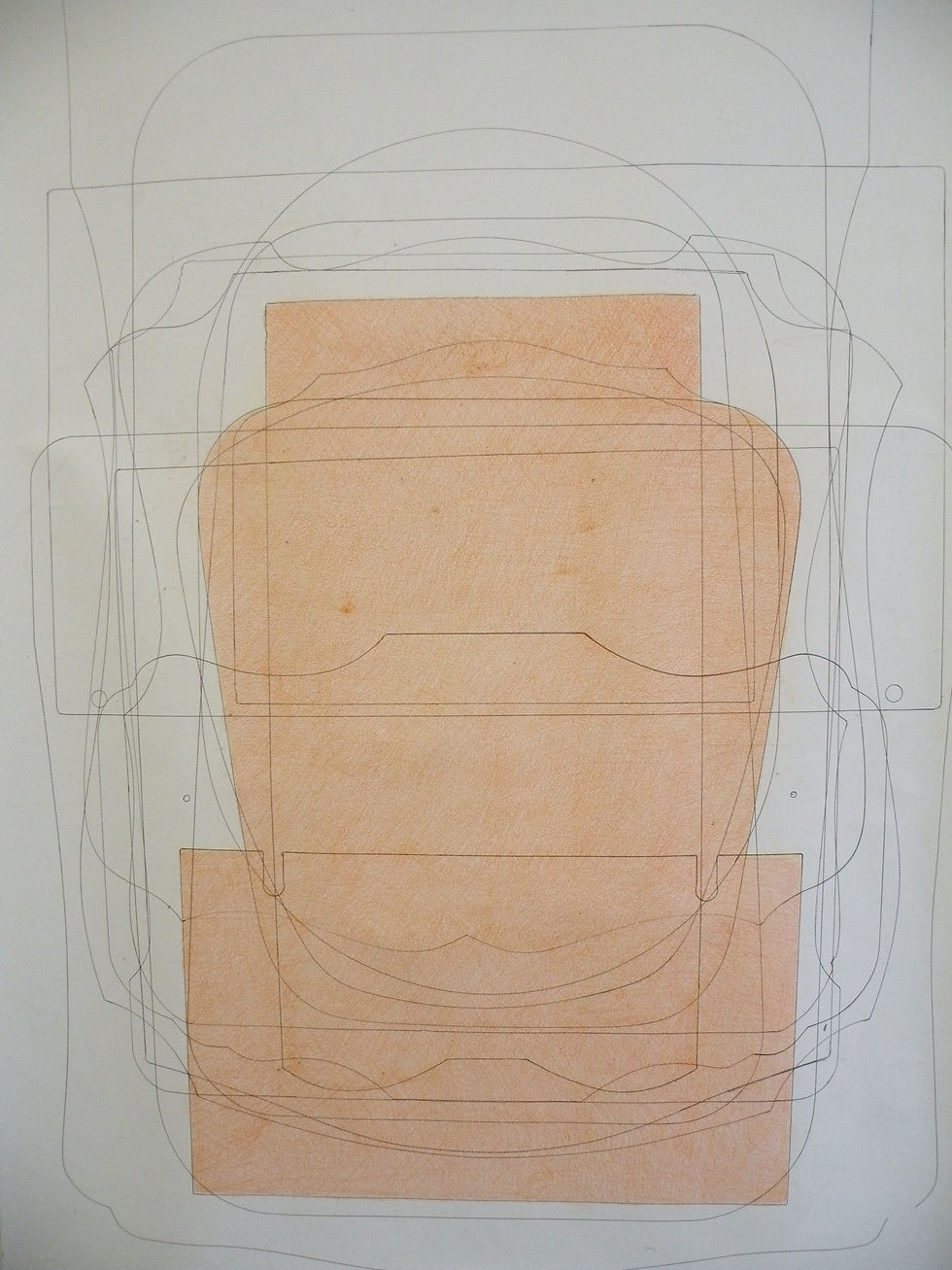Dimitri Vangrunderbeek




Reflections on tracing drawings
Over the past few years I developed a method of drawing as part of my artistic practice. It’s a method that is based on the act of tracing second hand furniture parts with a pencil and where I then start a creative process by adding other drawing acts. The reflective nature of this account is about looking deeper into the formal mechanisms of these different drawing acts, and about what I’m looking for through drawing in this way. Through reflection on this method I look for a new understanding of the phenomenon produced.
Referential forms
In the tracing drawings one can recognize the origin of the forms; one can recognize the mirrors and furniture parts through the sizes of the forms and the specific curve of the lines. But the flowing lines interact with each other when they overlap; they seem to be connected and to create new forms. In some drawings, the overlap creates excessive fragmentation. The abstracted forms can elicit associations with things other than furniture parts and mirrors.

Plastered Chairs
1996
Exploring sculptural qualities
Sculptural qualities can be identified in the line drawings. The different, overlapping, thick lines and curved forms seem to have a spatial impact on the white paper. This inspired me to add matter to the tracing drawings to make the forms and the sculpturality of the forms more explicit. I looked back at the sculpture Plastered Chair I made some years ago.
I smeared three to four thin layers of plaster on an ordinary chair, except for part of the back. I applied the plaster with my hand just before it hardened. This process resulted in an even structure on the fabric like a fragile shell. The chair lost its function; the porous plaster accentuated the forms and made it into a sculpture. In the same spirit I started to colour in the forms of the tracing drawings with a thick orange-brown colouring pencil. I hatched different layers of the same tone until a smooth and equal surface of ‘coloured matter’ was created. The carefully applied shading resulted in a slightly transparent, skin-like structure. As with the plastered chair, the traces of the physical act are not too accentuated.
The hatching is intensive. There are different tonalities that are intensified by the thick grain of the paper. Filling in forms in the drawing accentuates their concave and convex characters. In some drawings, the hatching establishes new formal relationships with all sorts of connotations. The forms remind us of enlarged terracotta objects.
In addition to the colouring pencils, I started to use a beige, water-based lacquer to paint over some of the hatchings. It’s a light and warm background tone that gives a new value to the objects and other colours. As a result of applying the lacquer to the drawings, painterly aspects were introduced in the drawing method. It is a satin lacquer, slightly transparent. It leaves a haze of the underlying orange-brown colour. The water-based lacquer makes the drawing paper shrink slightly, causing the drawings to come away from the wall slightly. The skin-like quality then becomes even more present. The combined lacquered forms look like sculptural stackings or like a stiff monumental clothing.
more info on: